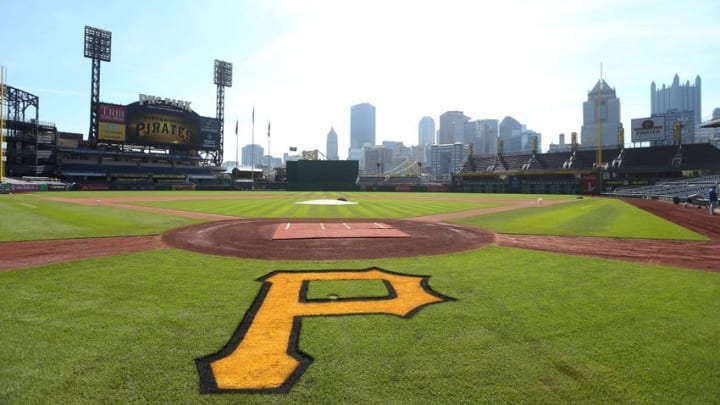Second Baseman
Bill Mazeroski (with Pirates from 1956-1972)
.260/.299/.367, 2163 G, 8379 PA, 84 OPS+ (with Pirates)
Maz played 17 years in the big leagues and was a below average hitter every single year. He had a lifetime on-base percentage under .300 and a lifetime slugging percentage of .367. He spent most of his career batting sixth, seventh, or eighth in the lineup.
Despite his subpar bat, Mazeroski was a seven-time all-star because he was a wizard with the glove. He won six Gold Glove Awards and was particularly known for his ability to turn the double play. He always used a very small glove so he wouldn’t waste any time reaching for the ball when turning two. Mazeroski had teammates who would break in a new glove every year, but Maz would use the same glove for six or seven years.
It’s ironic that a player most know for his impressive abilities on defense had the biggest moment of his career at the plate. It came during the 1960 World Series. The Pirates faced a New York Yankees team that had Mickey Mantle, Roger Maris, and Yogi Berra, among others. This was during a stretch when the Yankees played in the World Series 15 times in 18 years. This 1960 team led all of baseball with 193 home runs, 43 more than the next-closest team in the AL.
The Pirates won three of the first six games of the series by scores of 6-4, 3-2, and 5-2. The Yankees also won three of the first six games, but they were all blowouts: 16-3, 10-0, and 12-0. Heading into Game 7, it seemed ridiculous that the Yankees hadn’t won the series already, considering how much they had outscored the Pirates.
The deciding game was at Forbes Field. The Pirates took a 4-0 lead into the fifth inning, but gave up a run to make it 4-1. The Yankees pushed four runs across the board in the top of the sixth and two more in the top of the eighth to make it 7-4, Yankees. The Pirates battled back with five runs in the bottom of the eighth. The big blow was a three-run home run by backup catcher Hal Smith.
Now the Pirates led 9-7 going into the top of the ninth. The Yankees weren’t dead yet, though. An RBI-single by Mickey Mantle made it 9-8 and an RBI-groundout by Yogi Berra tied the score. That set the stage for the only game-winning home run in Game 7 in World Series history. Cue Bill Mazeroski at the plate leading off the ninth inning against Ralph Terry:
In 2010, a 12-foot tall statue of Mazeroski rounding second base with his batting helmet raised high in his right hand was unveiled near the PNC Park right field grandstands. The statue of Mazeroski is one of four statues honoring former players. The others are Honus Wagner, Roberto Clemente, and Willie Stargell. On the day of the unveiling of the Mazeroski statue, Bill Mazeroski said, “How could anyone ever dream of something like this?”
